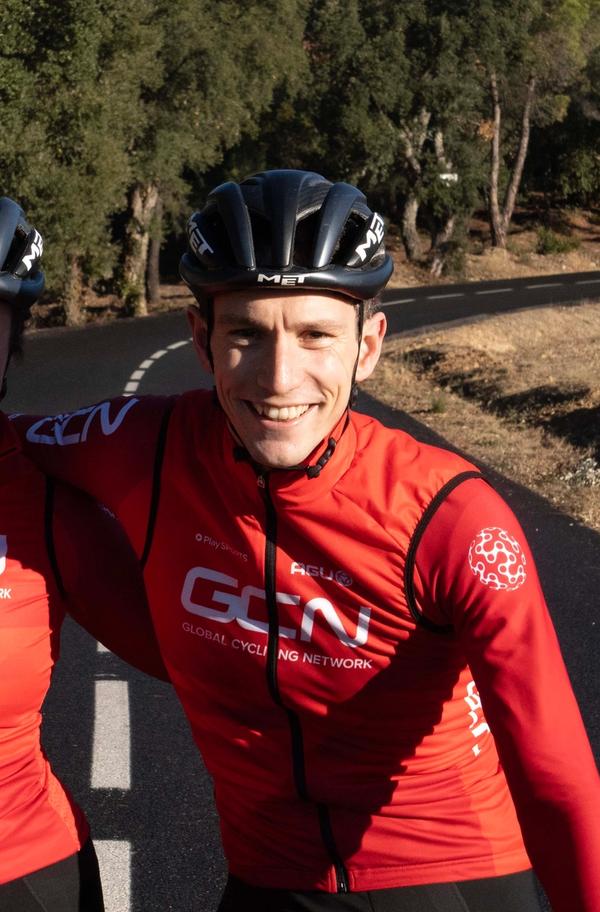Will two weeks of riding at altitude improve your fitness?
Si Richardson spent two weeks bikepacking in the Himalayas – did it make him fitter?
Simon Richardson
GCN Presenter
If most of the riding you do is squeezed in around the rest of your life, the chances are your rides are shorter and higher intensity than you’d like. I ride as much as I can, which most of the time, is about five or six hours a week. On a good week, I get in eight hours, and on a bad week, I might only manage three. It’s enough to maintain my fitness, but I never get any better.
A cycling holiday, training camp or bikepacking trip can seem like the perfect opportunity to break the plateau. With a week or two to do nothing but ride, you’ll be able to log some long, steady hours on the saddle and put valuable work into your base. Pick the right location and you can even benefit from altitude training, just like the pros do.
The problem is that, when it comes to training, two weeks is a blink of the eye. With that in mind, I wanted to find out just how much of a difference a couple of weeks of riding can make to an amateur cyclist’s fitness.
Fortunately, I had an opportunity to find out exactly that. In May 2023, I returned from the Himalayas, having spent two weeks bikepacking for a documentary for GCN+. I wanted to know how two weeks of steady-state riding at altitude had affected my fitness, so I put myself to the test. Here’s how I got on.

© GCN
Bikepacking at altitude is a long way from structured training
Zone 2 fitness
I didn't do a dedicated zone two fitness test before I went, but I know where my fitness is because, as I said, it never really changes. Towards the end of 2022, I headed to a lab to calculate my zone two, and I’ve kept an eye on my zone two ever since.
Before going to the Himalayas, I was riding at about 245 to 250 watts in zone two, and since getting back, I'm putting out 25 watts more at the same heart rate and, crucially, at the same breathing rate. That’s in the same ride - but for 25 watts more, for the same heart rate, and importantly the same breathing rate - what's interesting is that although I'm still in zone two, I can feel it much more in my legs after the session.
Why do my legs feel worse?
Interestingly, since getting back, riding in zone two has become harder for my legs. Even though I’m riding to the same intensity, I can feel it much more in my legs after the session. That might seem a bit strange, but it can be explained by one or two things.
First of all, as you get fitter and as your aerobic engine gets more efficient, your zone two metabolic rate becomes a higher proportion of your maximal sustainable aerobic power. Effectively, then, your body can afford to push harder on the pedals, without straying into higher-intensity zones. Of course, then, zone two riding will be harder for your legs.
Secondly, whilst two weeks of steady riding has made me fitter, my legs haven’t ‘caught up’ – my aerobic capacity has improved, but my muscles are the same.
Anaerobic fitness
To get a better idea of how my trip had affected my top-end power, I did a five-minute max power test. It showed that my anaerobic fitness has taken a hit from my two-week bikepacking trip.
First of all, this is because of the kind of riding we were doing. We were riding steadily all day, never straying into the kind of high-intensity efforts that develop top-end power.
Then there’s the altitude. Even though it was doing wonders for my aerobic fitness, the altitude made it so much tougher that we simply weren’t able to put out half as much power as we’d do at sea level. So actually, riding at altitude has deconditioned my legs.
This is why professional athletes use altitude very selectively in their training. They sleep high and train low, so they benefit from the altitude without reducing their power output as they ride.
FTP test

© GCN
Si did his FTP test on the indoor trainer
Finally, (and with reluctance) I did an Functional Threshold Power (FTP) test on the indoor trainer. I used a testing method developed by a friend and coach, Oli Beckingsale. Essentially, you estimate your FTP, then do 10 minutes at 90% of it, 10 minutes at 100% of it, and then you do as long as possible for 110% of your FTP. After going ‘til you blow, you take your best 20-minute average, and that’s your FTP. If you estimate your FTP correctly, you should be able to last at 110% for five minutes.
Using 350W as my estimated FTP, I managed seven and a half minutes in that 110% zone, which means that my FTP has increased 4% from my two-week trip. Not bad!
Conclusions
The take home from this experiment is that bikepacking, or logging big, base miles for a couple of weeks, is going to help your fitness. It certainly had a really big impact on my fitness.
I’m convinced the altitude has accelerated that progress, although it is a bit of a double-edged sword, in that my top-end power and anaerobic fitness seem to have taken a hit.
What my results show is that a couple of weeks of low-intensity, high-volume riding can be the perfect pattern breaker for your training. Ultimately, losing a bit of top-end power is fine, because it puts you in a fantastic position to get back out on those quick post-work rides, and bring that high-intensity riding back into your routine.
It brings us back to something that Nick Craig, an elite veteran racer told us about his training. He mentioned how a week of high-volume, low-intensity riding sets him up for months of shorter, higher-intensity rides.
Now, I’m ready to get going with loads of high-intensity work, and maybe even a bit of strength training, so I can build on that new and improved base of fitness I’ve picked up in the Himalayas.










